As the title suggest, this is a sort of blanket request for several early war aircraft to flesh out the 1914-1915 years of WW1 aviation.
These include both armed and un-armed variants on BOTH sides.
I shall start with my personal favorite and work from there.
- - - - - - - - - - - - - - - - - - - - - - - - - - - - - - - - - - - - - - - - - - - - - - - - - -
Morane-Saulnier H
I think this is one of the loveliest aircraft.

Derived from the pre-war Morane-Saulnier G two seat monoplane, the Morane-Saulnier H served with French and British air forces through the first years of WW1 as an unarmed scout.
Several of these in French service took part in the defense of Paris in 1914 - The First battle of the Marne. The pilots may have carried revolvers or carbines to ward off enemy fliers. They may have also dropped grenades.
SPECS per WIKI:
Crew: One pilot
Length: 5.84 m (19 ft 2 in)
Wingspan: 9.12 m (29 ft 11 in)
Height: 2.26 m (7 ft 5 in)
Empty weight: 188 kg (415 lb)
Gross weight: 444 kg (979 lb)
Powerplant: 1 × Le Rhône 9C, 60 kW (80 hp)
Performance
Maximum speed: 120 km/h (75 mph)
Range: 177 km (111 miles)
Service ceiling: 1,000 m (3,280 ft)




Users:
France
Great Britain
Denmark
Portugal
Russia
Switzerland
Belgium
Germany (Pfalz-built)
Austria-Hungary (Pfalz-built)
- - - - - - - - - - - - - - - - - - - - - - - - - - - - - - - - - - - - - - - - - - - - - - - - - -
Phalz E.I - E.II - E.V

Phalz- Flugzeugwerke license built Morane-Saulnier H designs as their nearly identical Phalz E.1 monoplane.
This served as not only an unarmed scout, but was also sometimes armed with a synchronized MG to fire through the propellor arc in the fashion of its contemporary, the Fokker E.II and E.III, which they served along side of. Powered by an Oberursel U.0 which generated about 80hp.
Pfalz E.II was mainly an E.I frame with a more powerful Oberursel U.I engine which generated about 100hp. The E.II was also armed with a Synchronized MG firing through the propeller arc. It served side by side with E.I models and Fokker air-frames.
Phalz E.V was a departure from Rotary engines, and comprised a Phalz air-frame mated to a Mercedes D.I watercooled inline-6 engine. It reached a top speed of 160 KPH and was also armed with a single MG as its fore-bearers. Only about 20 were delivered.
E.I



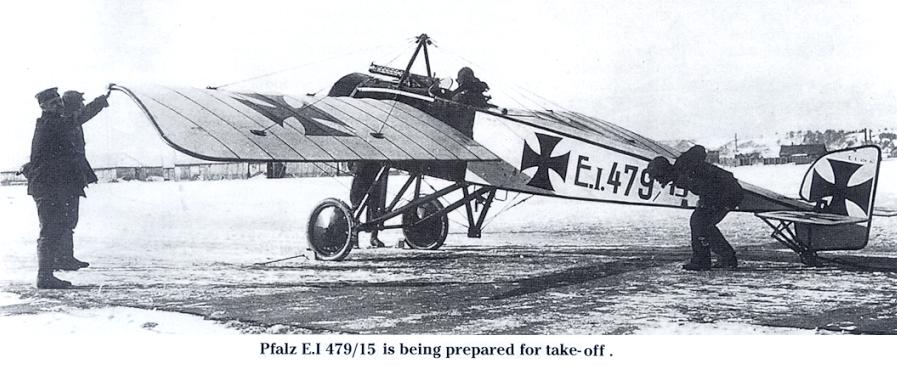
E.II


E.V




SPECS
1915
Fighter
Length 6.3 meters
Wingspan 9.26 meters
height 2.55 meters
wing area 14.4 meters squared
Empty weight 345 kg
Takeoff weight 535 kg
80 hp air cooled 7-cylinder Oberursel-gnome U-0
top speed 145 kph
climb to 2000 meters 12 minutes
ceiling 3300 meters
range 180 km
duration 2 hours
crew 1
SPECS E.II
1916
fighter
length 6.45 meters
wingspan 10.2 meters
height 2.55 meters
wing area 16.0 meters squared
empty: 410 kg
takeoff: 620 kg
100hp air-cooled 9 cylinder Oberursel U.1 engine
Top speed 150 kph
climb to 2000 meters 9 min 45 sec
ceiling 3300 meters
range 220 km
duration 2 hours
crew 1
SPECS E.V
1916
fighter
length 6.60m
wingspan 10.2m
height 2.6 meters
wing area 16.o meters squared
empty: 510 kg
takeoff: 696 kg
105 hp water cooled 6 cylinder inline Mercedes D.I engine
top speed165 kph
climb: ----
ceiling: ----
range 180 km
duration ----
crew 1
- - - - - - - - - - - - - - - - - - - - - - - - - - - - - - - - - - - - - - - - - - - - - - - - - -
Morane-Saulnier L

One of the first true fighter planes, the Type L was a parasol wing monoplane produced for the french military as MS.3. Built in single and two seat versions, they were also used operationally by Great Britain, Russia, and other nations. Pfalz license built examples were used by Germany and Austria-Hungary. Over 600 examples were produced, not counting the Pfalz built versions.
The type is famous as the first aircraft to shoot down an enemy with a forward firing MG fired through the propellor arc. The feat was accomplished by French aviator Roland Garros in April 1915 when he shot down 3 German aircraft before he himself was forced to land behind enemy lines and the aircraft was captured.
One of the type L was the first aircraft to destroy an enemy Balloon.
Pfalz license built the Type L in 3 main versions:
The Pfalz A.I, A.II, and E.III.
A.I was nearly identical to the Type L.
The A.II used the more Powerful Oberursel U.I engine developing 100hp.
Both A.I and A.II were unarmed scout aircraft though they could have been used to harass enemy troops by dropping grenades or small bombs carried by the pilot. The pilot most likely carried a pistol or rifle for protection.
And the E.III was a standard A.II frame armed by a single synchronized MG firing through the propeller.
SPECS
General characteristics
Crew: 2
Length: 6.88 m (22 ft 6¾ in)
Wingspan: 11.20 m (36 ft 8? in)
Height: 3.93 m (12 ft 10? in)
Wing area: 18.3 m² (197 sq ft)
Empty weight: 393 kg (865 lb)
Loaded weight: 677.5 kg (1,491 lb)
Powerplant: 1 × Le Rhône 9C 9-cylinder rotary engine, 60 kW (80 hp)
Performance
Maximum speed: 125 km/h (68 knots, 78 mph) at sea level
Endurance: 4 hr
Climb to 1000 m (3000 ft): 8 min
Armament
Guns: 1 × 0.303 in (7.7 mm) Lewis gunThis first image is interesting. The observer is armed with an un-mounted MG, and there appears to be a small bomb mounted below the fuselage??
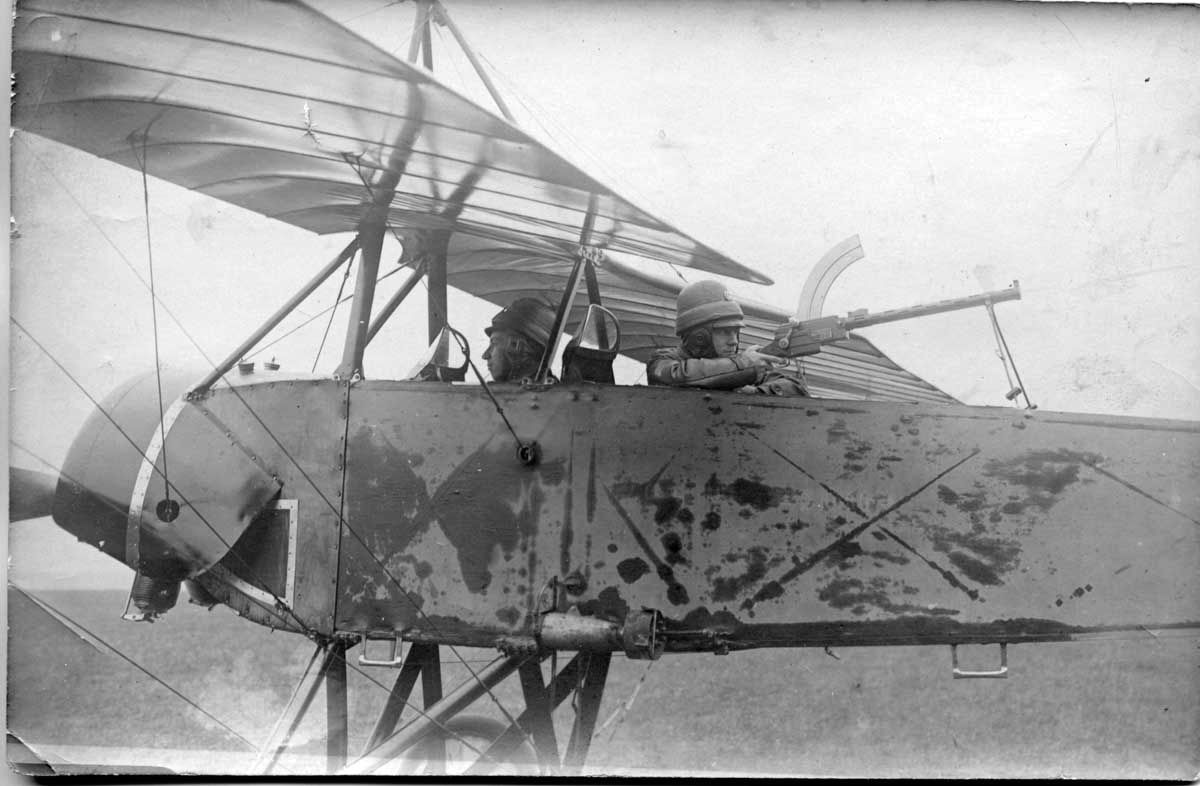





USERS:
Argentin
Belgium
Czechoslovakia
Finland
France
Peru
Poland
Romania
Russia
Sweden
Switzerland
Turkey
United Kingdom
Germany(Pfalz-built)
Austria-Hungary(Pfalz-built)
- - - - - - - - - - - - - - - - - - - - - - - - - - - - - - - - - - - - - - - - - - - - - - - - - -
Pfalz A.I/A.II/E.III
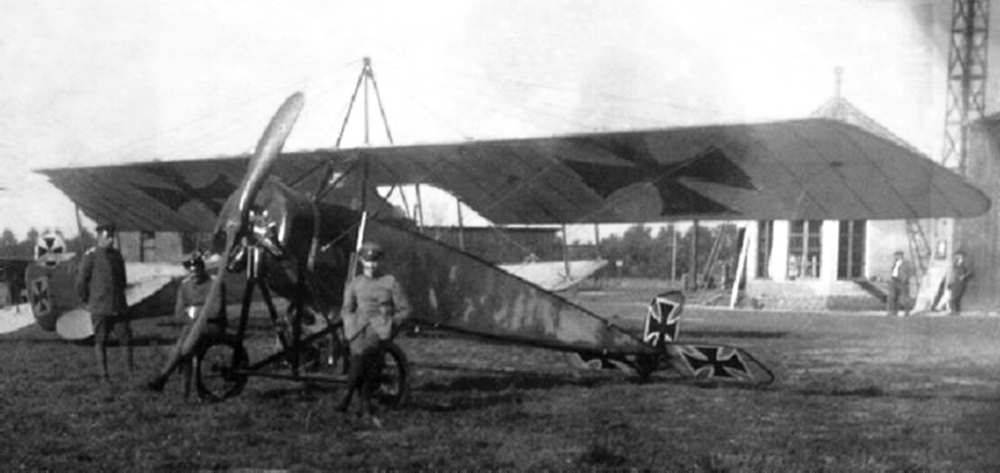
These were License built copies of The widely used Morane-Saulnier L series of aircraft.
A.I was a direct copy, featuring an 80hp Oberursel U.0 engine. Unarmed, these were primarily scouts and recon aircraft.
The pilots would have most likely been armed with pistols or rifles, and could have dropped grenades or small bombs.
The A.II was an improved version veaturing the more powerful Oberursel U.I of 100hp.
The E.III was essentially an A.II frame armed by a single syncronized Spandau MG in the fashion of other Pfalz and Fokker monoplane types.

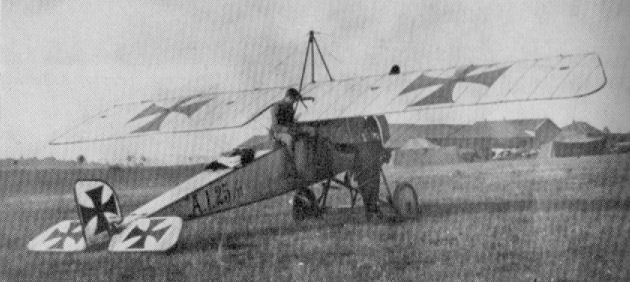
USERS:
Germany
Austria-Hungary
- - - - - - - - - - - - - - - - - - - - - - - - - - - - - - - - - - - - - - - - - - - - - - - - - -
Morane-Saulnier N/I

The Type N was a French built Monoplane fighter also used by the RFC and in small numbers by Russian military forces.
Although it was very streamlined, it was not well liked by British pilots, mainly due to its high landing speed.
Its Engine was fitted with a large "Casserolle " spinner leading the British flyers to nickname it the "bullet"
Type N were armed with a single Hotchkiss Gun firing through the propeller, which was protected by steel deflector wedges.
Type I was essentially a type N fighter with a more powerful 110 hp LeRhone 9j engine.
Type I was armed with a .303 vickers machine gun.
SPECS
General characteristics
Crew: One (pilot)
Length: 5.83 m (19 ft 1½ in)
Wingspan: 8.15 m (26 ft 8? in)
Height: 2.25 m (7 ft 4½ in)
Wing area: 11 m² (118.4 ft²)
Empty weight: 288 kg (633 lb)
Loaded weight: 444 kg (976 lb)
Powerplant: 1 × Le Rhône 9C air-cooled rotary engine, 60 kW (80 hp)
Performance
Maximum speed: 144 km/h (90 mph) at ground level
Service ceiling: 4,000 m [2] (13,123 ft)
Endurance: 1 hr 30 min
Climb to 2,000 m (6,560 ft): 10 min
Armament
Guns: 1 x .303 in (7.7 mm) Vickers machine gun or .31 in (7.9 mm) Hotchkiss
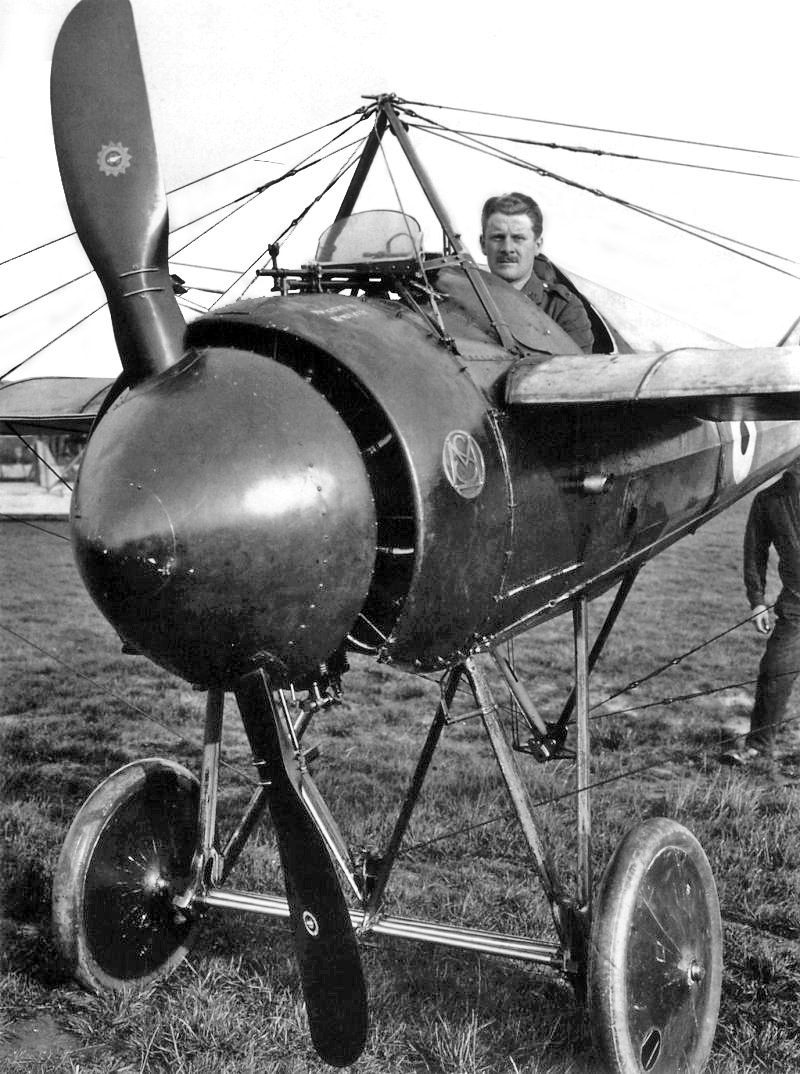


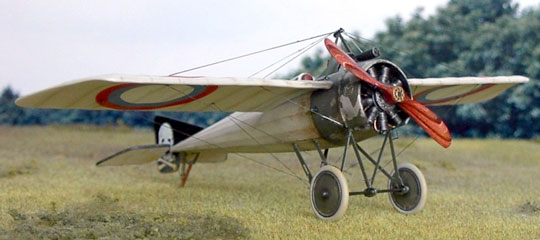
USERS
France
Great Britain
Russia
Ukraine
- - - - - - - - - - - - - - - - - - - - - - - - - - - - - - - - - - - - - - - - - - - - - - - - - - - - - - - - - - - - - - - -
Bleriot XI
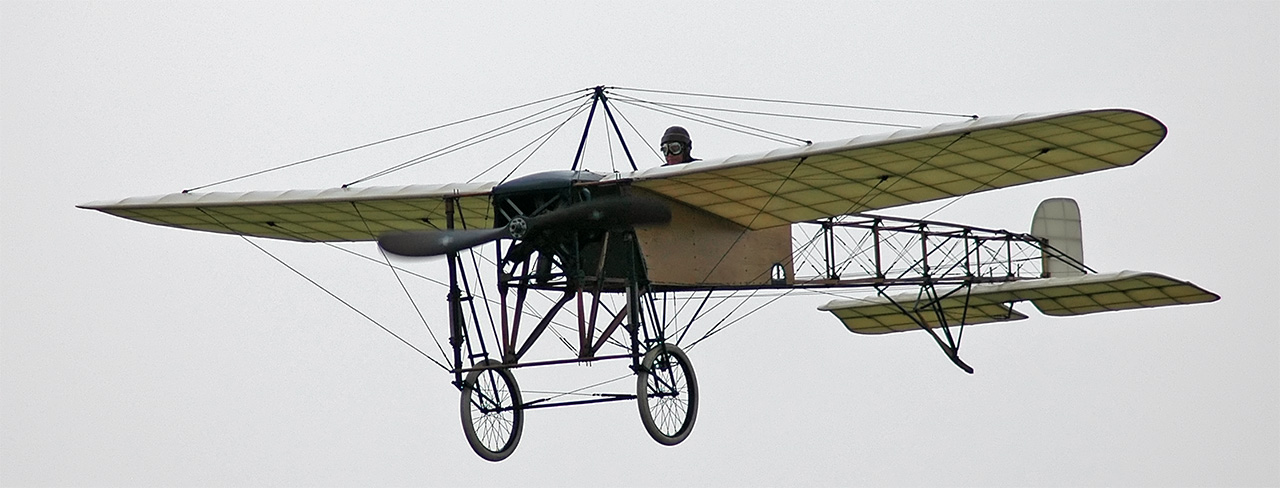
Aside from making history as the first aircraft to cross the english channel, the Bleriot aircraft served fathfully in many military forces as scouts surveying enemy troop movement, dropping small bombs, and even as a makeshift fighter.
The Bleriot planes were first used by Italy and France and first saw action used by Italy over Africa in 1911 making the Bleriot XI the first aircraft to be used in warfare. Great Britain began to recieve Bleriots in 1912. All three countries fielded the Bleriots during the opening stages of WW1 in many roles from scout to light bomber.
SPECS
General characteristics
Crew: 1
Length: 7.62 m (25 ft 0 in)
Wingspan: 7.79 m (25 ft 7 in)
Height: 2.69 m (8 ft 10 in)
Wing area: 14 m2 (150 sq ft)
Empty weight: 230 kg (507 lb)
Powerplant: 1 × Anzani 3-cyl. fan 3-cyl. air-cooled fan-style radial piston engine, 19 kW (25 hp)
Propellers: 2-bladed Chauvière Intégrale, 2.08 m (6 ft 10 in) diameter
Performance
Maximum speed: 75.6 km/h (47 mph; 41 kn)
Service ceiling: 1,000 m (3,281 ft)




USERS:
Argentina
Australia
Australian Flying Corps
Belgium
Bolivia
Brazil
Bulgaria
Chile
Denmark
France
Greece
Guatemala
Kingdom of Italy
Japan
Mexico
Norway
New Zealand
Romania
Russia
Serbia
Sweden
Switzerland
Ottoman Empire
United Kingdom
Uruguay
Thank you for your supreme patience! This is the end.
I Tried to stick to types that saw service or were produced in notable numbers, though I left off the Fokker E.IV and Pfalz E.IV both of which were larger versions of their previous forms, and armed with twin spandau MG. In each case, they were produced in very limited numbers, and quickly replaced as the weight of the extra gun caused disappointing performance loss, and few were used at the front.
I really think that aircraft like these would fill a gap in our WW1 lineup, and really shine next to contemporary planes that we already have such as the Be2, Voisin, and others.
 Author
Topic: WW1 Early Monoplane Scouts/Fighters (Read 9844 times)
Author
Topic: WW1 Early Monoplane Scouts/Fighters (Read 9844 times)


